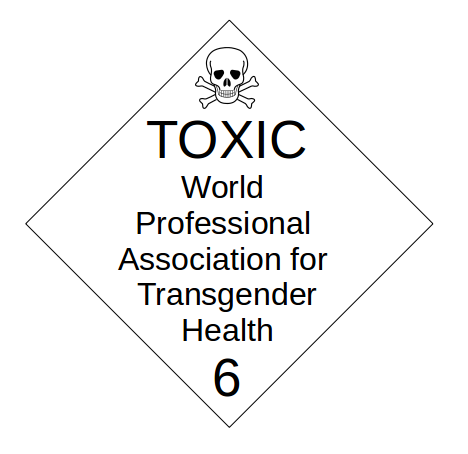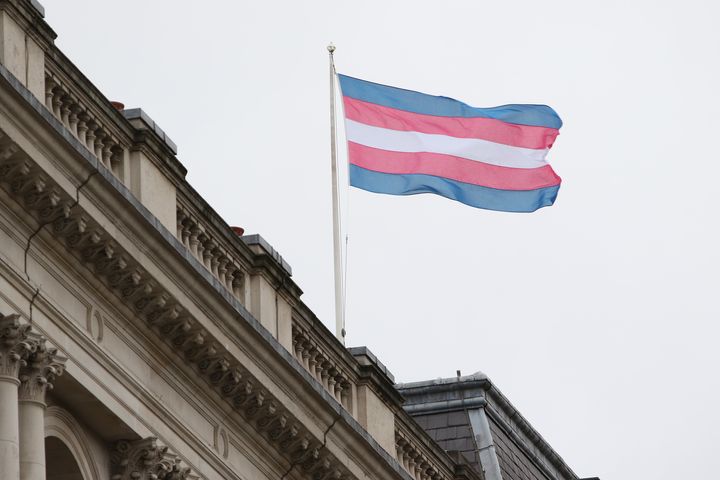An Epidemic of Misinformation: Murder Rates and the Transgender Population
Trans-identified people actually have a lower murder rate.

According to the Human Rights Campaign, 26 transgender or “gender non-conforming” people were killed in the United States during 2018. Transgender rights activists say the murder of trans-identified people is a growing problem in the US. This claim, often phrased as an “epidemic of violence” against a vulnerable population, is used to justify the supposed necessity of giving in to trans activists’ demands. In 2015, one activist even claimed,“For a number of years, a majority of homicide victims have been trans women of color.” But does this rhetoric really stand up to scrutiny?
The idea that transgender people are being murdered at high rates isn’t an uncommon one—it’s gripped the modern liberal consciousness and is perpetuated by mainstream news sources, politicians, and celebrities. Take, for example, this article from the New York Times published in November 2017, stating violence against transgender people is on the rise. In two back-to-back paragraphs, the New York Times makes two statements which completely contradict one another:
“The Human Rights Campaign has documented the killings of 25 transgender people in the United States so far in 2017. . .”
This article was published at the end of the first week of November; forty-four and a half weeks into 2017.
“On average, one to two [transgender people] have been killed somewhere in the United States every week,” the Times continue.
"Accurate, unbiased information, is increasingly hard to find on transgender issues, especially when concerning discrimination and violence."
If 25 transgender people had been killed so far in 2017 at nearly forty-five weeks into the year, that would actually put the number of transgender people killed in the United States closer to about one every other week or two per month.
The author may have been referring to the annual average, but those numbers don’t add up either. The article also states that “each of the past three years [preceding 2017] has become the deadliest on record.” The article goes on to say that 2016 saw the murder of 23 transgender people and 2015 the murder of 21 transgender people. If you take this annual average, it’s even fewer killed per month.
The New York Times, as of 2017, has 130 million monthly readers and is generally considered a credible source that most progressive readers trust. But accurate, unbiased information, is increasingly hard to find on transgender issues, especially when concerning discrimination and violence.
Huffpost released a similar article entitled Violence Against Transgender People Has Gotten Worse, also in November 2017. The article shares numbers of trans-identified people murdered in the years preceding 2017, pointing out that they have gone up. (Twenty-nine transgender people were killed in the U.S. in 2017.) Although any increase in violence is concerning, since the transgender population has seen a dramatic rise (as the definition is widening), this is no surprise.
The first source this article cites, a document by the Humans Rights Campaign, states that between 2008 and 2016, worldwide, 2,300 transgender and gender diverse people had been killed. To put this into perspective, 3,268 females were killed in the United States in 2018 alone—even though this same document claims transwomen are four times as likely as the general population of women to be murdered (citing themselves as the source of the estimation).
"3,268 females were killed in the United States in 2018 alone"
The ACLU published an article in August 2018 entitled “Deadly Violence Against Transgender People Is on the Rise. The Government Isn’t Helping.” At one point, the article equates suicide by transgender people with violence against them. “Deadnaming,” or referring to a trans-identifying person by their previous or legal name, is listed as violence:
“Practically speaking, deadly violence against transgender people, including by suicide, is fueled by this kind of government action that legitimizes anti-trans bias by perpetuating the idea that a trans person’s name and gender aren’t ‘real.’”
To be clear, there is no actual violence (which requires physical force) being exerted here. Yet, this is presented as evidence of an “alarming trend” of “deadly violence against transgender people.”
Presidential candidate Elizabeth Warren tweeted in May 2019 about a record number of transgender Americans killed in 2018 (which is not true—if you go by the numbers presented by the HRC, 2017 was the high). She stated “trans women of color” were affected disproportionately.
Since 2013, more than 150 trans people have been murdered in the U.S., the majority Black transgender women. On #TDoR2019, we remember and honor the lives lost, hold their loved ones in our hearts and must commit to doing all we can to end this epidemic of violence and hate. https://t.co/c1pYPPmpxD
— Chelsea Clinton (@ChelseaClinton) November 20, 2019
Nancy Pelosi made a similar tweet the next day. In June 2019, presidential candidate Cory Booker tweeted about “the especially high rates of murder” of transgender people, and on July 23, both Bernie Sanders and Kamala Harris made tweets about the killing of transgender people. In November, Chelsea Clinton tweeted about the murder of trans-identified people, calling it an "epidemic."
In October 2019, at the CNN Equality Town Hall, a trans-identified man took the microphone from a woman before she had a chance to ask her question—as the woman was saying she wanted to validate the pain of transgender people—and began to perpetuate the idea that transgender women (biological men) are being murdered at disproportionately high rates. He was met with applause from the crowd.
During the Democratic Presidential Debate in January, Senator Elizabeth Warren again brought up violence against transgender people.The Advocate reported on this, referring to violence against transgender people as an epidemic. The American superhero television series Supergirl aired an episode perpetuating the idea that the killing of transwomen is an epidemic on March 15th.
The New York Times published another article in September 2019 under the title "18 Transgender Killings This Year Raise Fears of an ‘Epidemic.’" Epidemic is defined by Merriam-Webster as “affecting or tending to affect a disproportionately large number of individuals within a population, community, or region at the same time.”
If there is an epidemic to be found here, it is the epidemic of misinformation.
Trans-identified people actually have a lower murder rate
According to the United States Census Bureau, the U.S. population in 2018 was 327,167,434. There were 14,393 total murders that year, which means 4.4 people per 100,000 were murdered in 2018.
An estimate from UCLA in 2016 put the number of transgender adults in the United States at 1.4 million. The same year 27 trans-identifying people were murdered. That means approximately 1.9 transgender people per 100,000 were murdered in 2018.
Trans-identifying individuals were actually murdered at less than half the rate of the general population. The Washington Times reported murder rates similar to what we find crunching these numbers for the general public and for transgender people. The murder rate for females in the United States in 2018 was also, though just barely, higher than that of the transgender population at about 2 per 100,000 females. Overall, a trans-identifying individual is less likely to be murdered than a woman, or any member of the general population.
"A trans-identifying individual is statistically less likely to be murdered than a woman, or any member of the general population."
The Human Rights Campaign reported the same number of trans murders in 2019 as 2018—twenty-six. Since the number of transgender people is rising, then the percentage of transgender people murdered in 2018 was likely even lower than these numbers show, since the data on the transgender population from UCLA is from 2016.
If we look at each transgender individual killed in 2018, their stories tell us something different than mainstream media narrative of "transphobia," "hate," and "bigotry." These people suffered deaths they never should have, but it’s unlikely they were killed because they were transgender.
Nine, over one-third, of the 26 transgender people killed in 2018 were involved in prostitution. Studies show the staggering rates of violence against people sold as prostitutes, with one study finding 82% of those interviewed had been physically assaulted and 83% had been threatened with a weapon.

Additionally, 21 of the 26 trans-identified people who were murdered were people of color, 18 of whom were black, and 25 of the 26 were biologically male. There were a total of 14,393 people murdered in the United States in 2018. Seventy-seven percent of these victims were men (with 87% of perpetrators of known sex being male), and 52% were black (29 of the murder victims in 2018 were of unknown sex).
The statistics on transgender murders, though tragic, aren’t at all unexpected. Black males are at a higher risk for murder in general, regardless of gender identity.
"In about half of the cases, the police said they did not find reason to believe the attack was motivated by transphobia."
In about half of the cases, the police specifically said they did not find reason to believe the attack was motivated by transphobia. Yet, the deaths of these people are used to push a false narrative when it’s convenient. It’s much more likely that these people were murdered because of their involvement in prostitution, a life lived in poverty, a life in a neighborhood with high crime rates, or some combination of the three. It’s important to note that all three of these things are often a result of systemic racism and classism, which also disproportionately affect people of color and gay and bisexual people.
The murders of transgender people are tragic, and we should work to prevent the murder of anyone for any reason. But if we keep claiming these people were killed because of their gender identity, we lose sight of the real problem and therefore lose any ability to help others. For instance, we forget to ask why most of the murder victims were black, or why one-third of these people were working in prostitution.
What risks do different populations actually face?
In 2016, the Williams Institute of UCLA released a report entitled “Race and Ethnicity of Adults Who Identify as Transgender in the United States.” They found that about 16% of transgender adults are black. This would put the 2018 black transgender population at about 224,000 individuals, based on the 2016 data. This shows about eight black trans-identified people per 100,000 were murdered in 2018, a total of 18.
In 2018, there were about 43,840,436 black people in America. With a total of 7,492 black people murdered in America in 2018, that means about 17 black people per 100,000 were murdered. Black people made up 13.4% of the population in 2018 but accounted for 52% of murder victims. Once again, the black trans murder rate is less than half that of the general black population.
It is clear that the murder of transgender people is not an epidemic. But the murder of black people is.
"The black trans murder rate is less than half that of the general black population."
If we want to do justice by these victims, we have to think about what placed them in these vulnerable positions. If prostitution is so dangerous, do we want people to end up in the sex trade? If we don’t want people to be hurt in this way, we have to put a stop to the demand for human beings as sexual commodities. One study of prostitution across five countries (the USA, Thailand, South Africa, Zambia, and Turkey) posits, “. . .to be female, or to appear female, [is] to be targeted for violence in prostitution.” The same study stated that in America, there is a widespread notion that prostitution is a normal job for women as well as a denial of the prevalence of prostitution. It also found that 92% of respondents, female and male, including trans-identified individuals, said they wanted to leave prostitution. Findings also show that even as reports of childhood physical and sexual abuse and assault and rape in prostitution varied, symptoms of PTSD and acute psychological distress were present, suggesting that prostitution itself is a cause of PTSD.
Knowing over one-third of the transgender people murdered in 2018 were involved in prostitution and that an overwhelming majority of people being prostituted are women, I have to wonder, how many women are murdered because of their involvement in prostitution? It’s been estimated that prostituted women are 60 to 100 times more likely to be murdered than women who are not prostituted. How many of these women are beaten and raped repeatedly before they eventually die, their death the result of an overdose or injuries sustained from beatings, never linked to violence?
"If we don’t learn from these people’s suffering and recognize what truly put them at risk, we can’t prevent similar events from taking place in the future."
Realizing the murder of transgender people is not an epidemic is crucial because when the public buys into something, politicians pander to that belief. This can affect politics at-large and divert much-needed resources. If the nation’s worries for the well-being of transgender people are being funneled toward this idea that there is a deadly epidemic of hate crimes waged against them, attention is not on the issues truly affecting people identifying as transgender or the people who were murdered who just happen to be trans. If we don’t learn from these people’s suffering and recognize what truly put them at risk, we can’t prevent similar events from taking place in the future.
Trans people may still face certain risk factors
Though data does not back up the claim that transgender people are murdered at higher rates than the general population, transgender people can of course face discrimination. If the world is to become a better place for trans-identified people, we need to focus on the problems truly facing them.
The second in a series of research briefs on youth homelessness from the University of Chicago looks in depth at the LGBTQ population. The first brief revealed this group has a 120% higher risk of experiencing homelessness than their non-LGBTQ counterparts. Though the report was able to conclude that LGBTQ youth face homelessness at over twice the rate of non-LGBTQ youth and that they have twice the rate of early death, the brief also noted that the sample of LGBTQ youth was not large enough to study sexual orientation and gender identity as separate risk factors for homelessness. This means we’re left without truly accurate estimations of youth homelessness among the transgender and LGB populations respectively, though these two at-risk populations likely require different interventions.
The study did find, though, that rates of explicit homelessness among youth (ages 18-25) who are both black and LGBTQ are staggering at 16%, with white LGBTQ at 8%, black non-LGBTQ at 7%, and white non-LGBTQ at 4%. The data also shows that LGBTQ youth face adversity at much higher rates than non-LGBTQ youth.
One study from the Williams Institute examining multiple data sets from different years seeks to gain insight into whether LGBT people are more likely than non-LGBT people to experience food insecurity. They found that 27% of LGBT adults experienced food insecurity at least once in a year, compared to 17% of their non-LGBT counterparts. Of the four data sets evaluated, three contain data only on LGB people, not transgender people. The data set that does include transgender people counts all LGBT people collectively.
This is a common problem in gender identity research—the failure to sex disaggregate data, and to lump all LGB and trans-identified people into the same category. Sexual orientation and gender identity are completely different, and may often overlap. This data failure prevents us from determining things about the LGB and transgender populations as separate groups with separate problems, which in turn means we cannot efficiently implement policies or measures to help each group. That said, the rate of food insecurity among LGBT people is higher than that of non-LGBT people, and this is something we should pay attention to.
"This data failure prevents us from determining things about the LGB and transgender populations as separate groups with separate problems, which in turn means we cannot efficiently implement policies or measures to help each group."
There are definitely reasons why transgender people may find themselves susceptible to a lack of housing, food, and employment opportunities or why transgender people already in these situations may have a hard time getting out of them.
One study published in 2019 highlighted such barriers through interviews with 20 transgender and gender-nonconforming individuals in the southeastern United States who are food insecure. They found that these individuals may lose jobs after coming out as transgender or may resign due to an unwelcoming and potentially toxic environment or that transgender individuals may have difficulty finding a job in the first place due to discrimination. They also found that transgender individuals had difficulty utilizing food pantries, as they were often organized by religious groups that were largely unwelcoming of them. One study participant is cited as saying, “We had a couple food banks near us, but we were iffy about going to them. Pretty much all of the things in our area are run out of conservative churches. . . I would also have to dress more feminine than I was comfortable with at that time and just keep our heads down, hope nobody noticed anything off.”
Since this study involved only 20 participants and to qualify for the study, you had to be food insecure, it contains no estimation of the prevalence of food insecurity among transgender individuals. But it does reveal real problems facing the transgender community, and if helping transgender people is the goal, those are the things we should be focused on. Things like creating food pantries where gender non-conforming individuals, people of any identity, will feel safe and welcome. This could mean creating secular food pantries that emphasize commitment to all individuals, regardless of background or social identity. We should also be working to ensure all people have employment or financial security, so they aren’t forced into food insecurity and poverty in the first place.
Another study participant stated, “I couldn't find jobs for months on end, and that became a struggle to pay my rent and to find food, or not to find food, but to afford food. Ultimately, what I had to do was begin doing sex work in order to pay my bills, including buying food.” This is a common experience among those living in poverty. Housing and food insecurity, poverty, is a driving factor for sex work.
The 2015 U.S. Transgender Survey found that 29% of respondents were living in poverty compared to 12% of the general population, and 30% of respondents had experienced homelessness at some point throughout their lives. The survey also found 12% of respondents had done sex work as a means of income. (Both of the discussed studies focusing specifically on the transgender population also used transgender as an umbrella term to refer to other identities described as gender fluid, genderqueer, non-binary, etc. It should be noted that the 2015 U.S. Transgender Survey did not use representative sampling.)
"The 26 transgender people murdered in 2018 and their families deserve justice. But they can’t truly get that if we’re not honest about their hardships."
Of course it’s possible for an individual to be targeted and even murdered for being transgender, just as it’s possible for a person to be targeted for any other reason. But there is nothing to indicate the killing of trans-identified people is a trend. The 26 transgender people murdered in 2018 and their families deserve justice. But they can’t truly get that if we’re not honest about their hardships, about the circumstances that endangered them, such as prostitution, poverty, and racism. These three factors are connected for many of these victims.
The 2015 U.S. Transgender Survey found the unemployment rate of respondents to be 15%, three times that of the general public at the time (prior to the coronavirus and subsequent layoffs), and 20% for respondents who were people of color. It’s unclear, though, how much this discrimination is linked to perceived trans-identification rather than homosexuality and gender non-conformity, since someone cannot know another’s internal “gender identity” without being told.
Sex work is dangerous. Systemic racism often leads to poverty and poverty often leads to sex work. These are the factors in the death of people like Celine Walker, who was shot in Jacksonville in 2018 and who police said was involved with prostitution, and Tonya Harvey, who was shot in Buffalo, who was also involved in the sex trade. So-called “sex work” is incredibly harmful, and these people, just like anyone else, shouldn’t have had to endure it.
Those who cite dramatic headlines and quote tweets from politicians about the murder of transgender people most likely do have their hearts in the right place. Like me, they want to make the world better and safer for everyone. This epidemic of misinformation, however, can only enable the opposite by preventing policy makers from addressing the real sources of violence.
Do you want to bring the "gender madness" to an end? Help us write about it! 4W is able to pay our all-female staff and writers thanks to the generous support of our paid monthly subscribers.
Enter your email below to sign in or become a 4W member and join the conversation.
(Already did this? Try refreshing the page!)





Comments